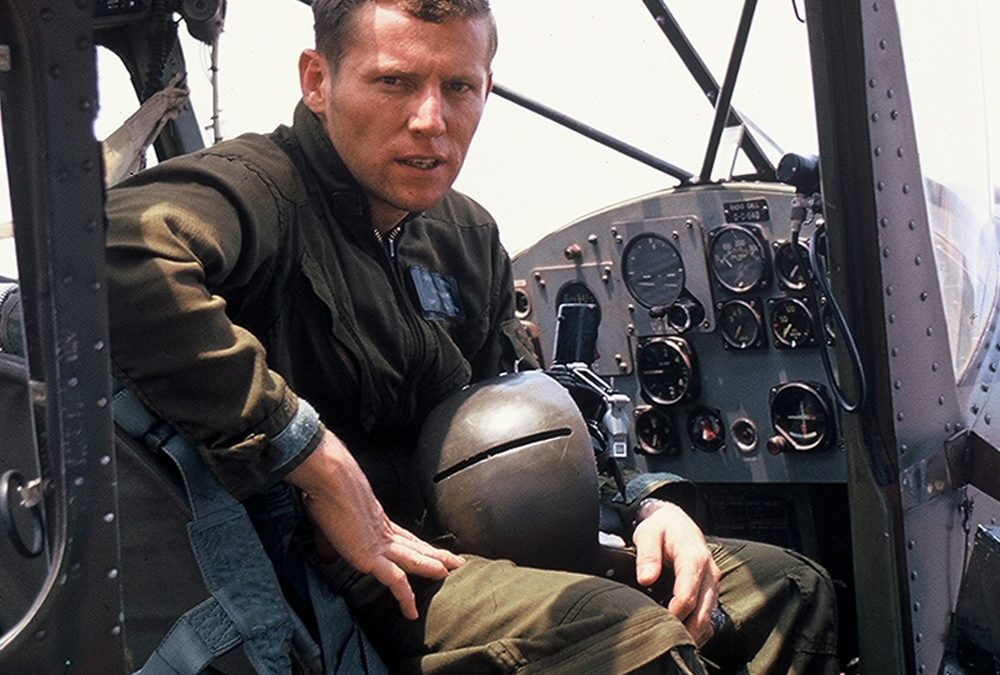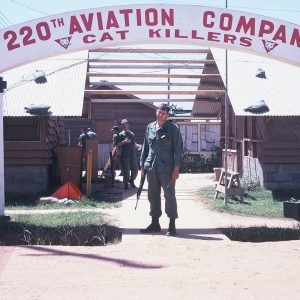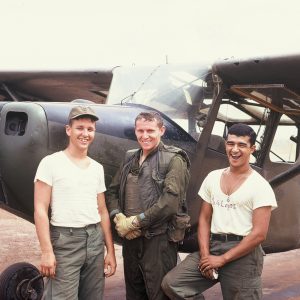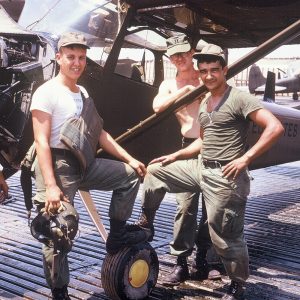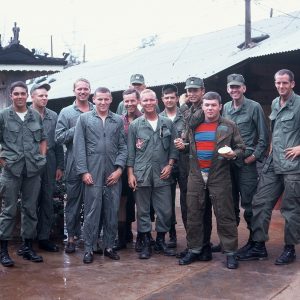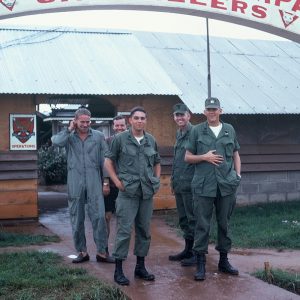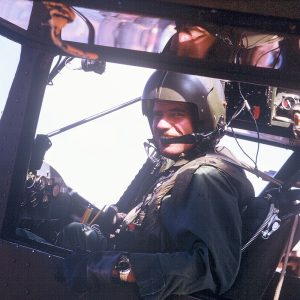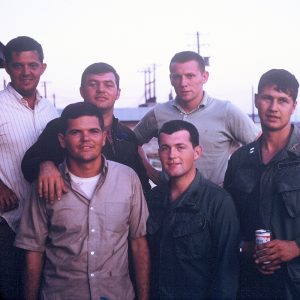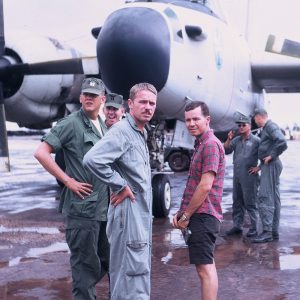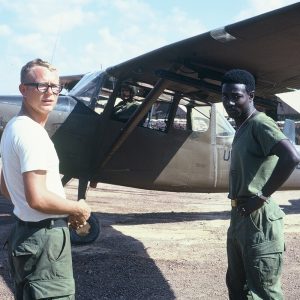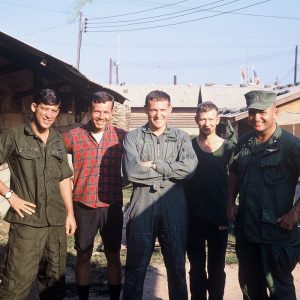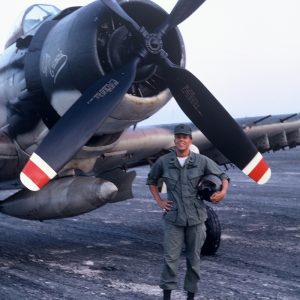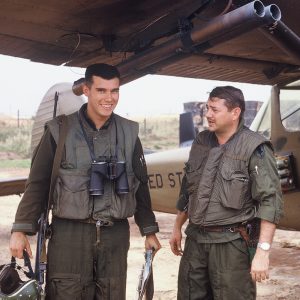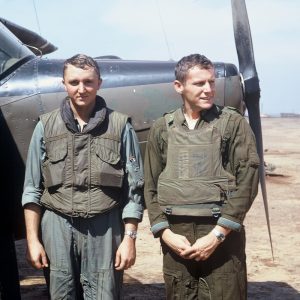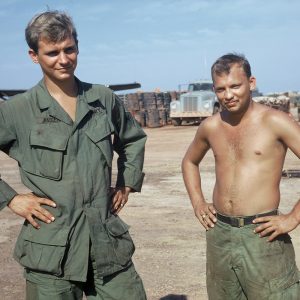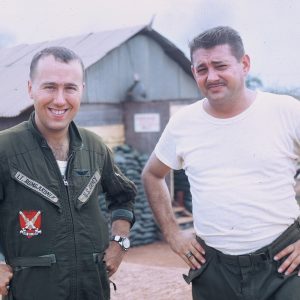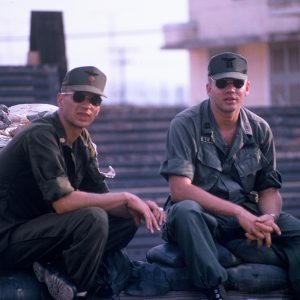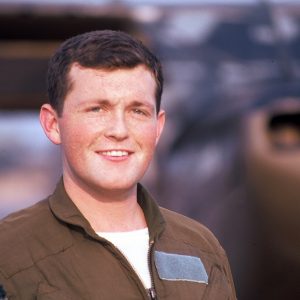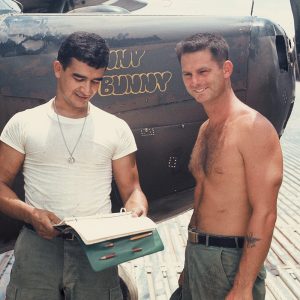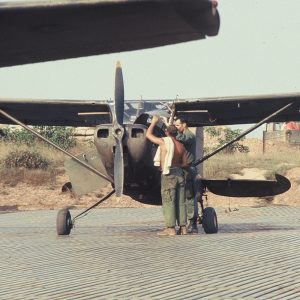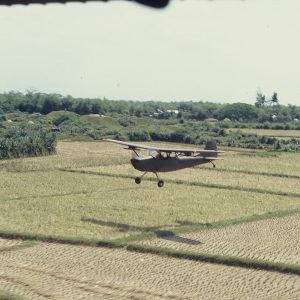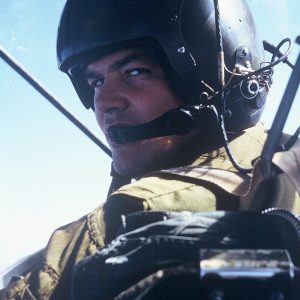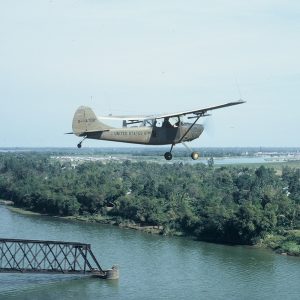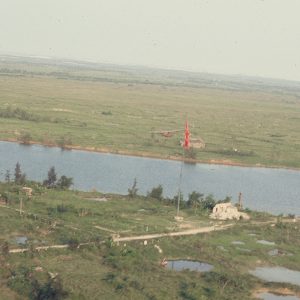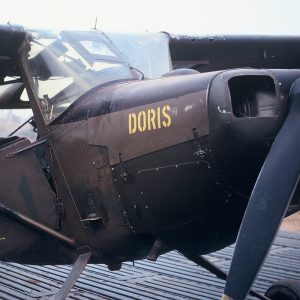The 220th Reconnaissance Airplane Company, a group of Army pilots and Marine aerial observers who directed close-air and artillery support for the Marines in I Corps, the military designation for South Vietnam’s northernmost provinces. They were known by the call sign “Catkiller 123”. The numerals indicated that he was 4th Platoon’s commander. “Cat” was shorthand for tiger and slang for the NVA. The Catkillers had more in common with World War I biplane pilots than with those flying the “fast-mover” jets they directed toward ground targets. Their prop-driven Cessna O-1 Bird Dogs cruised at about 100 mph, often only a few hundred feet over the heads of NVA anti-aircraft gunners. Bird Dog pilots constantly changed direction and altitude, flying with crossed controls—rudder pedals pushed one way and the aileron stick held the opposite way—to keep the noses of their aircraft aimed a few degrees to the right or left of their actual heading, making it harder for NVA gunners to predict where the planes would be moments after they pulled the trigger. The Bird Dog’s main weapons were four wing-mounted 2.75-inch-diameter rockets that shot out a bright white phosphorous smoke cloud to clearly mark enemy targets for bomb-laden jets arriving on scene. The rockets had explosive power similar to a 105 mm howitzer shell. The Army, Air Force and Marine Corps used Bird Dogs in Vietnam early in the war. But by mid-1967 the Air Force’s Cessna O-2A Skymaster—a “push-puller” with propellers in the front and back—began replacing the O-1. The last Bird Dog was retired from military service in 1974, although several are still flying in civilian hands today. Lightweight and able to turn on a dime, the Bird Dog proved ideal for front-line service. Pilots joked about wearing it on their backs instead of controlling it. The high wing allowed for maximum ground visibility, and the plane’s superior lift made short field takeoffs and landings a breeze. With extra windows around the cockpit and a reconfigured aft superstructure, crews could see virtually all the way around the aircraft. The Bird Dog also proved to be exceptionally rugged in combat. Pilots could keep it airborne with multiple bullet holes in the wings, Deibert recalled. “The skin is thin,” he said. “A round will go through it and just leave two little holes. You can look like a piece of Swiss cheese, and it’s no big deal unless a bullet hits the pilot or a gas line. It was just an awesome, awesome little airplane.”

